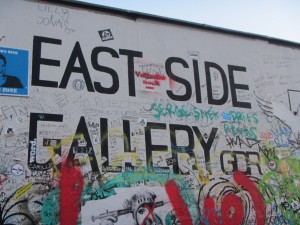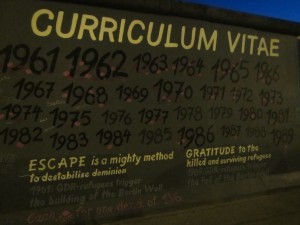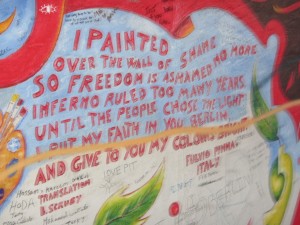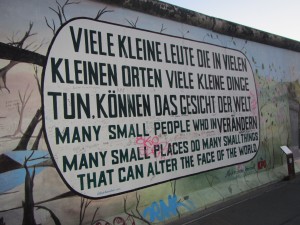As we end the first semester here at UBC, so far it has been a truly eye opening experience. I have had the pleasure to experience the Coordinated Arts Program which features certain course studies that all interconnect to the central idea of “Global Citizens”. Although we have been slowly delving into defining what this term means and how it is applicable to broader knowledge, I am still in the process of understanding “Global Citizenship”.
In our Art Studies course, we have been focused primarily on the genre of life narratives and more so, the global sense of these stories, and how “Global Citizenship” is applied to these stories. We have looked at autobiographies and articles which feature texts from all over. In particular, we have looked at Persepolis, What is the What, God Grew Tired of Us and life narratives in new media such as blogs and social networking sites.
Although we have not had a chance to really explore traditional autobiographies, we have been more focused on new mediums, it is very interesting to see the evolution of how life narratives are progressing, and in turn how scholars are advancing to keep up with the ever evolving nature of this genre. As I continued to write more blog posts, I have been noticing a trend of interest per say. I have been more intrigued with applying our state of knowledge with autobiographies but applying them to new forms of media. I looked at Facebook, PostSecret and UBC Confessions, Tattoo Culture and also the East Side Gallery. It is amazing to think that all of these very different subject matters share a commonality in which they tell a story, not just any story but someone’s story.
And as we move along the course of the year, I am becoming more aware of the ways in which how we use technology to document our lives. I touched upon this idea in my earlier post about Facebook and how it is becoming our own autobiography. However, Facebook is not the only source. I see how apps like Instagram, Vine, YouTube and Twitter all share the same utility to document our lives. I think back to my old baby photos and videos and how I was privileged enough to have access to so many memories. Then some of my other friends, their families could not afford a camera growing up, so there were seldom any photos of videos of them during their primary years. Yet we see how technology has advanced so far and how almost everyone has a camera on them, whether it be a digital camera, iPod or phone. I see family friends documenting key moments of their child’s life just on the click of a button, then the child’s picture is uploaded to Facebook and Instagram. And I cannot help but wonder, when this child is our age, how much access he will have to his old pictures and stories about him as a child.
It seems as though for our generation especially, that to take a picture, or post a status update is so natural to us. We may not even be consciously aware that we are constantly adding to our own life story with every upload. And when we look down at our phones and scroll through our Facebook Profile or Twitter account we, and our friends have an actual autobiography right at our fingertips. Although these life narratives may not be as eloquently presented as works like What is the What or Persepolis, we have to think that with the times maybe they style of autobiography is changing. Quite possibly that autobiography in itself is shifting from the premeditated and publicized works, to a colloquial everyday means of documentation, through our smartphones and social networking sites. I am starting to believe that today’s autobiography honestly captures the true essence of life narrative because there are no filters or edits, it is simply and purely sharing what we think and feel at this very moment in time.
Thank you UBC for a great first semester! Good luck on exams! And see you after the break









